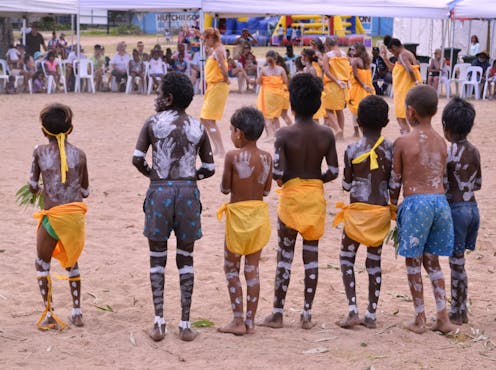how to achieve the Uluru statement and a First Nations voice
- Written by Eddie Synot, Senior Research Assistant, Griffith University

The Uluru Statement from the Heart is almost two years old and now enjoys bipartisan political support. Labor’s policy, if elected, is to hold a referendum on enshrining a First Nations voice in the Australian Constitution in their first term. The Coalition, while supporting the Uluru Statement from the Heart following the report of the Joint Select Committee on Constitutional Recognition Relating to Aboriginal and Torres Strait Islander Peoples, has budgeted for a design process to establish a model of the First Nations voice to parliament before going to referendum.
The support for the Uluru statement is a remarkable turning point in the history, and future, of the Australian nation. By issuing the Uluru statement to the Australian people, rather than to politicians, participants at the First Nations National Constitutional Convention in 2017 invited all Australians to “walk with us in a movement of the Australian people for a better future”. This invitation has been resoundingly embraced.
Read more: The Uluru statement showed how to give First Nations people a real voice – now it's time for action
At the core of this invitation is the principle of being heard. Australians have come to understand that First Nations peoples have a political and cultural right to be heard and to determine their own affairs.
Many also understand that this power is key to addressing what the Uluru statement termed “the torment of our powerlessness”. This means a new relationship between Indigenous and non-Indigenous peoples in Australia that establishes the foundations for a better future.
The establishment of this new relationship is also why it is important to enshrine these changes in the constitution before negotiating what this relationship will be.
The Australian Constitution is the foundation of the Australian nation, and it must be changed to enable a renewed relationship. Without addressing this first, any future changes implemented outside of the constitution will remain susceptible to the current arrangements that do not appropriately recognise First Nations peoples.
However, the need for constitutional change has been conflated with concerns about the need for a detailed design of the First Nations voice before a referendum, and misrepresentations of the process that is required to achieve this change. First, change the constitution. Then, negotiate the design of the voice.
Read more: The Indigenous community deserves a voice in the constitution. Will the nation finally listen?
The deferral of the detail of what the voice might be is a normal process of constitutional reform. Effective constitutional reform requires that any new addition to the constitution be explicit enough to provide for the establishment of the voice while being subject to the constitution. But it should not be so detailed that it becomes restrictive and meaningless to Indigenous and non-Indigenous peoples into the future.
There already exists significant research on the future design of a body that could be the First Nations voice. This includes eight reports since 2012, including the First Nations-led Referendum Council dialogues that produced the Uluru Statement in 2017 and the 2018 report of the joint select committee.
Participants in the regional dialogues of the Referendum Council and the First Nations National Constitutional Convention in 2017 provided a clear pathway forward. This is represented by submission 479 to the joint select committee. Importantly, the submission was written by experts who advised the regional dialogues and is representative of the desires of First Nations participants.
Submission 479 detailed the insertion of a new “Section 129: The First Nations Voice” and a simple referendum question to achieve this as detailed below.
Proposed Amendment
Chapter 9: First Nations
Section 129: The First Nations Voice
(1) There shall be a First Nations Voice.
(2) The First Nations Voice shall present its views to Parliament and the Executive on matters relating to Aboriginal and Torres Strait Islander peoples.
(3) The Parliament shall, subject to this Constitution, have power to make laws with respect to the composition, functions, powers and procedures of the First Nations Voice.
Referendum question
Do you approve an alteration to the Constitution that establishes a First Nations Voice?
YES / NO
This is a simple but powerful amendment. It provides recognition and the ability of First Nations peoples to negotiate with government while also respecting the place and authority of parliament and the constitution. This is, importantly, not a simple inclusion but rather a representation to the Commonwealth that is respectful of First Nations political and cultural identity and authority.
Conventional wisdom tells us that achieving constitutional reform can be difficult. But too much can be made of conventional wisdom, to the point that it stymies progress.
Read more: Lessons of 1967 referendum still apply to debates on constitutional recognition
Laws are meant to change. Section 128 of the constitution specifically provides for that ability and the successful 1967 referendum is an example of what can be achieved.
In 1967, it wasn’t the technical change to the constitution that held weight, nor was any specific detail about the future of Indigenous affairs entered into the constitution. Rather, it was the principle of “vote yes for Aborigines” that resonated.
Today, it is that same principle of respect and recognition for First Nations peoples that can deliver reform for a better future.
Authors: Eddie Synot, Senior Research Assistant, Griffith University





